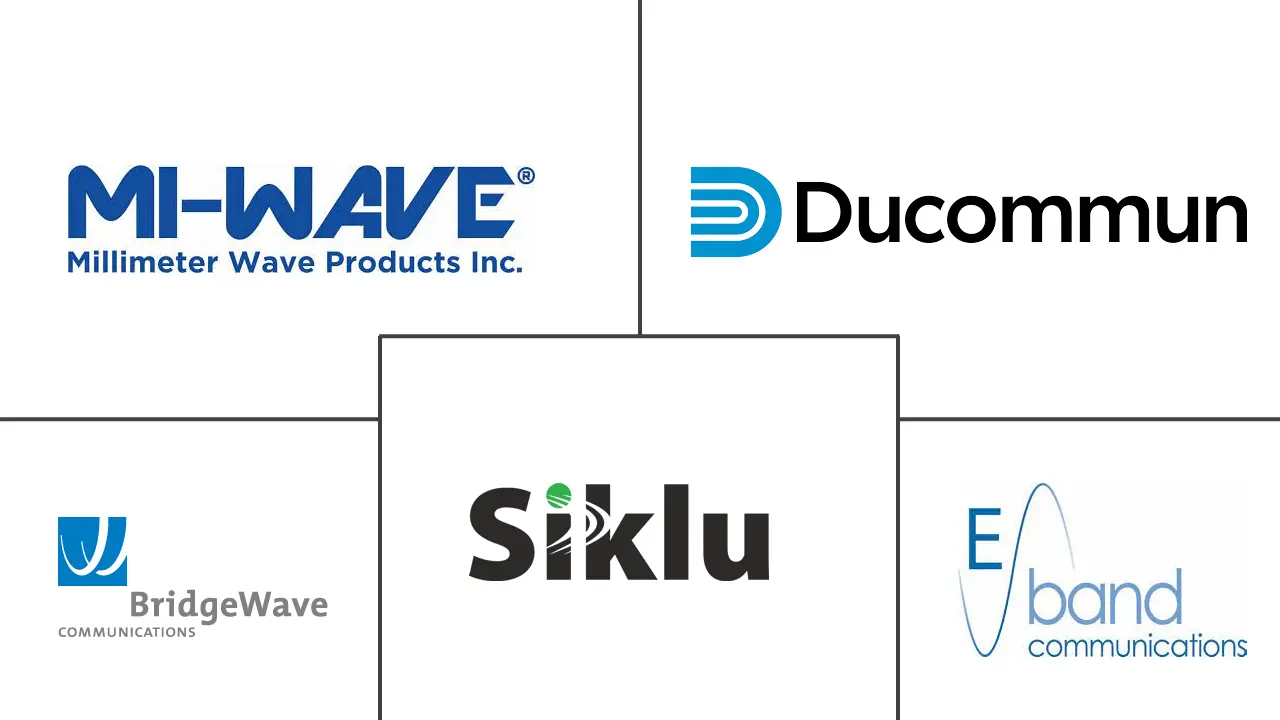Market Size of Millimeter Wave Technology Industry

| Study Period | 2019 -2030 |
| Market Size (2024) | USD 3.63 Billion |
| Market Size (2030) | USD 13.61 Billion |
| CAGR (2024 - 2030) | 24.60 % |
| Fastest Growing Market | Asia Pacific |
| Largest Market | North America |
Major Players
*Disclaimer: Major Players sorted in no particular order |
Need a report that reflects how COVID-19 has impacted this market and its growth?
Millimeter Wave Technology Market Analysis
The Millimeter Wave Technology Market size is estimated at USD 3.63 billion in 2024, and is expected to reach USD 13.61 billion by 2030, growing at a CAGR of 24.60% during the forecast period (2024-2030).
- The technology accommodates the massive increase in data demands from connected homes, AR/VR devices, cloud gaming systems, and other cloud-connected devices. Furthermore, mmWave bands above 50 GHz can provide over 20 GHz additional bandwidth in large, heavy chunks, allowing higher data rates. Some traditional wireless bands, notably 26 GHz and 28 GHz, have an uncertain future for backhaul since they are now targeted for 5G radio access. ETSI's mWT ISG already expressed concern regarding the need, while allocating mmWave bands for 5G, to consider operators' ability to continue operating the backhaul for their 3G and 4G networks.
- The rising use of millimeter-wave bands, owing to the advantages such as frequency re-usability and large channel bandwidths, make millimeter-wave and sub-millimeter, suitable for the high capacities required by 5G enhanced Mobile Broadband. Thus, the use of millimeter-wave bands for the access networks to increase the throughput of the User Equipment and backhaul of the base stations is adding demand for Millimeter Wave Technology.
- The market is expected to grow moderately during the forecasted period. The government initiatives toward the deployment of 5G and advancement in new technologies like IoT and smart cities are pushing the market players to develop new services/solutions to capture the market share.
- Migration from 4G to 5G has increased the demand for mmWave bands with wider bandwidths and high-speed data rates, increasing manufacturing costs. These higher costs for components and operations in high-volume manufacturing parts have forced manufacturers to rethink the economics of automated component testing. Demands for compatible millimeter wave components are adding substantial expense to manufacturers. mmWave 5G devices are substantially expensive to produce and sell. The challenge of deploying enough of the mmWave small cells to cover entire cities is anticipated to slow down market adoption in recent years.
- The pandemic caused significant supply chain interruptions that slowed down the expanded rollout of 5G at the beginning of 2020, but with the increasing mobile data traffic, the demand for high-speed communications such as 5G has grown significantly during the post-pandemic period. It was expected that 5G network operators would launch the network within both urban and rural areas, taking considerable advantage of the move by telecom regulators to free up spectrum in a few frequency bands.
